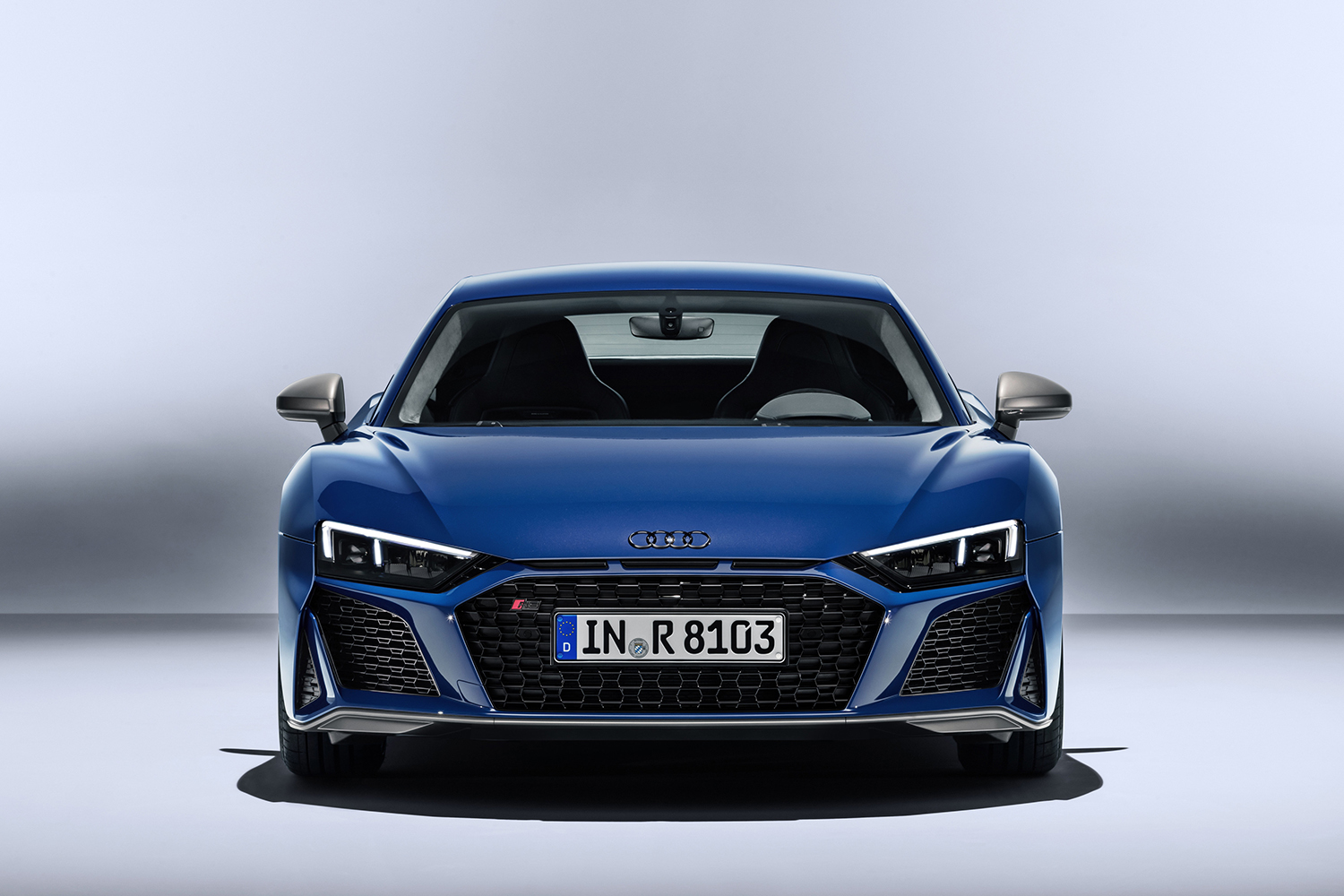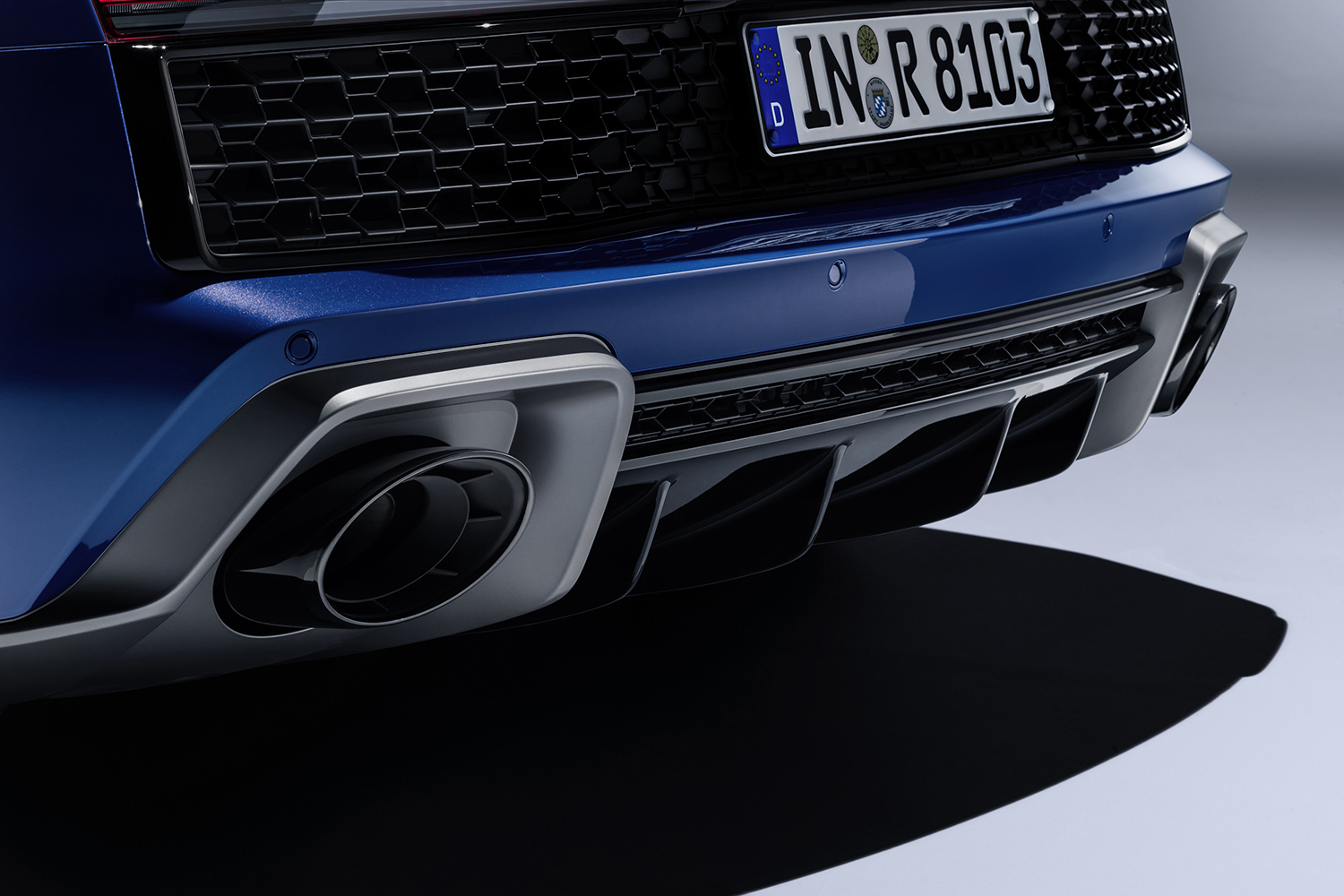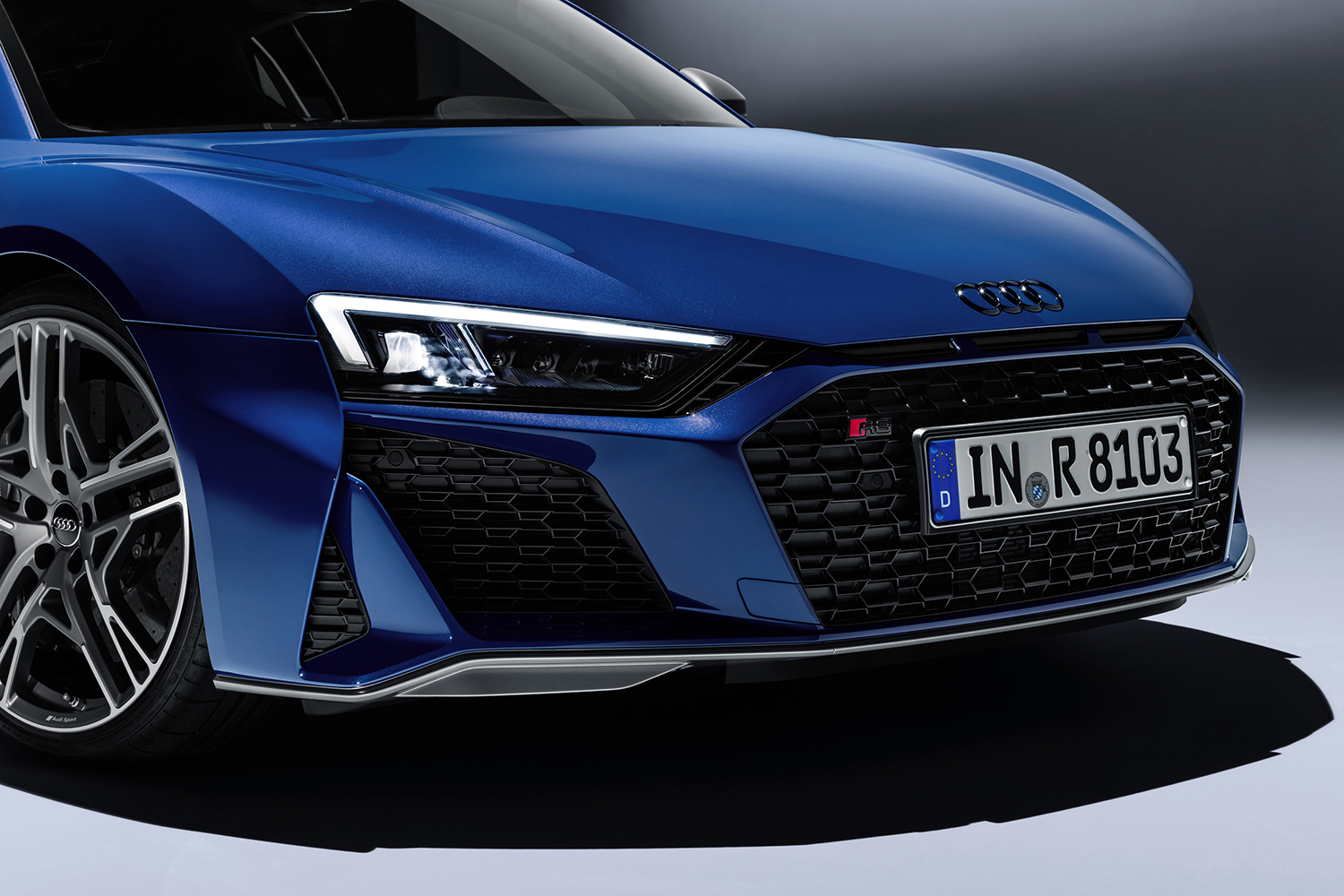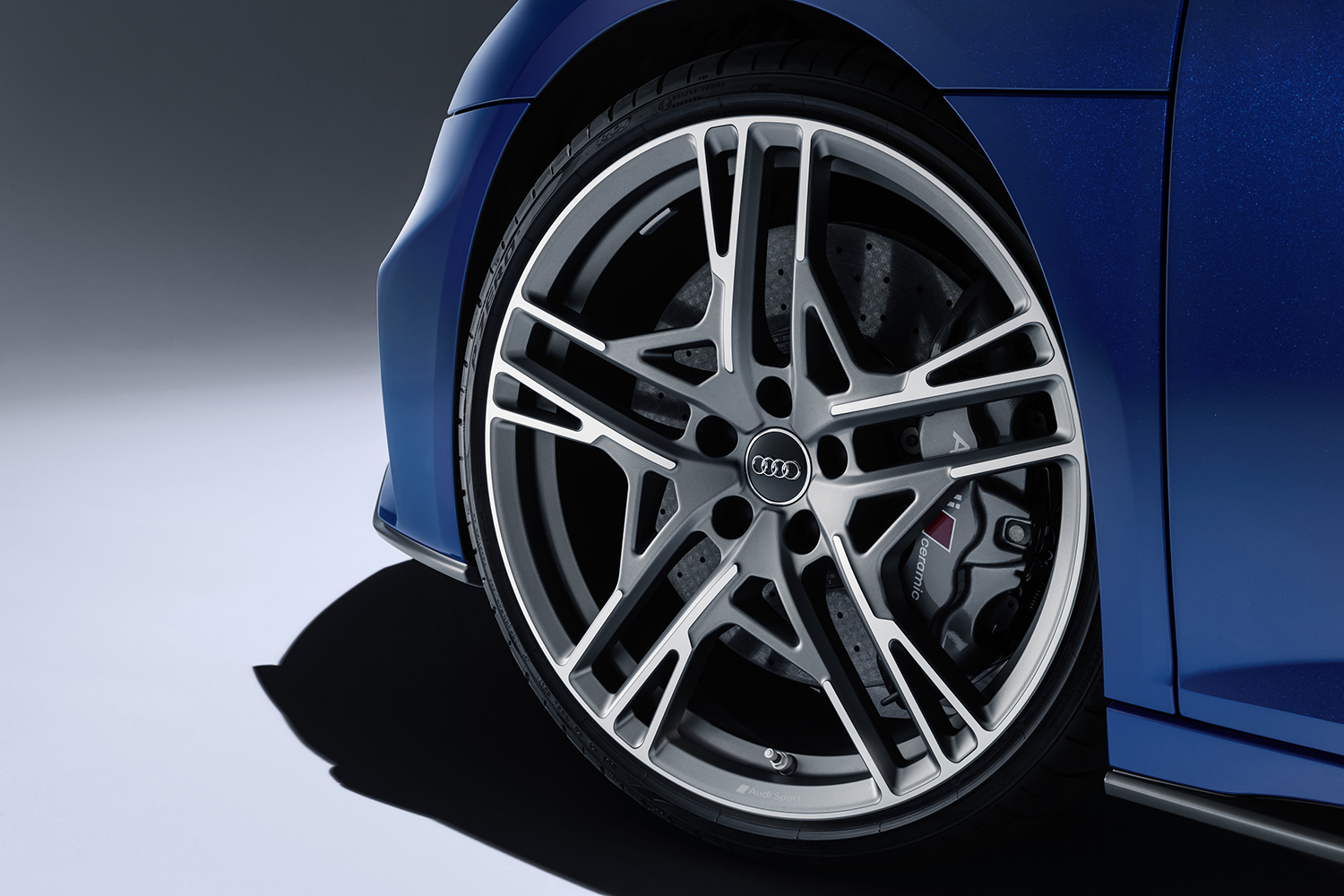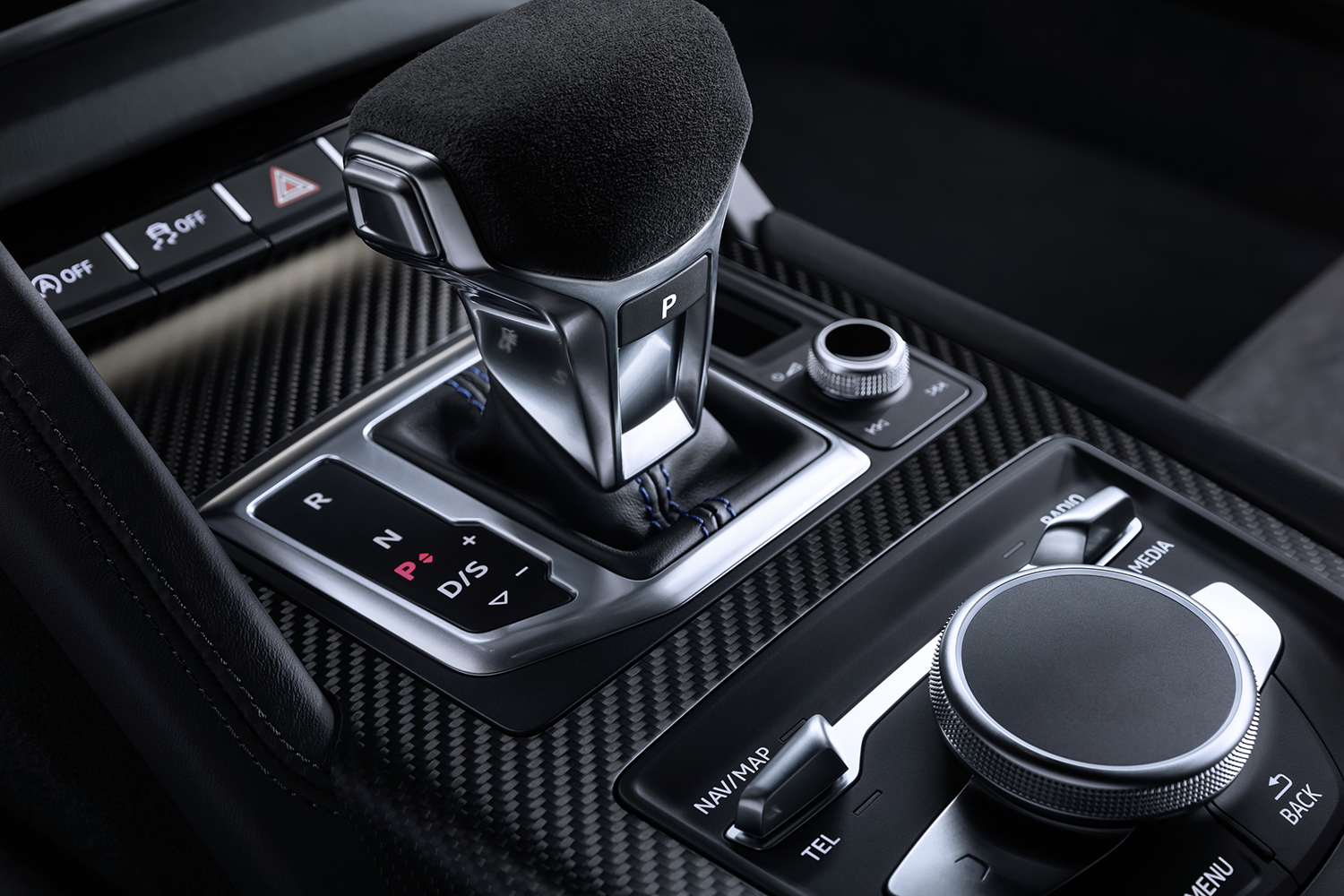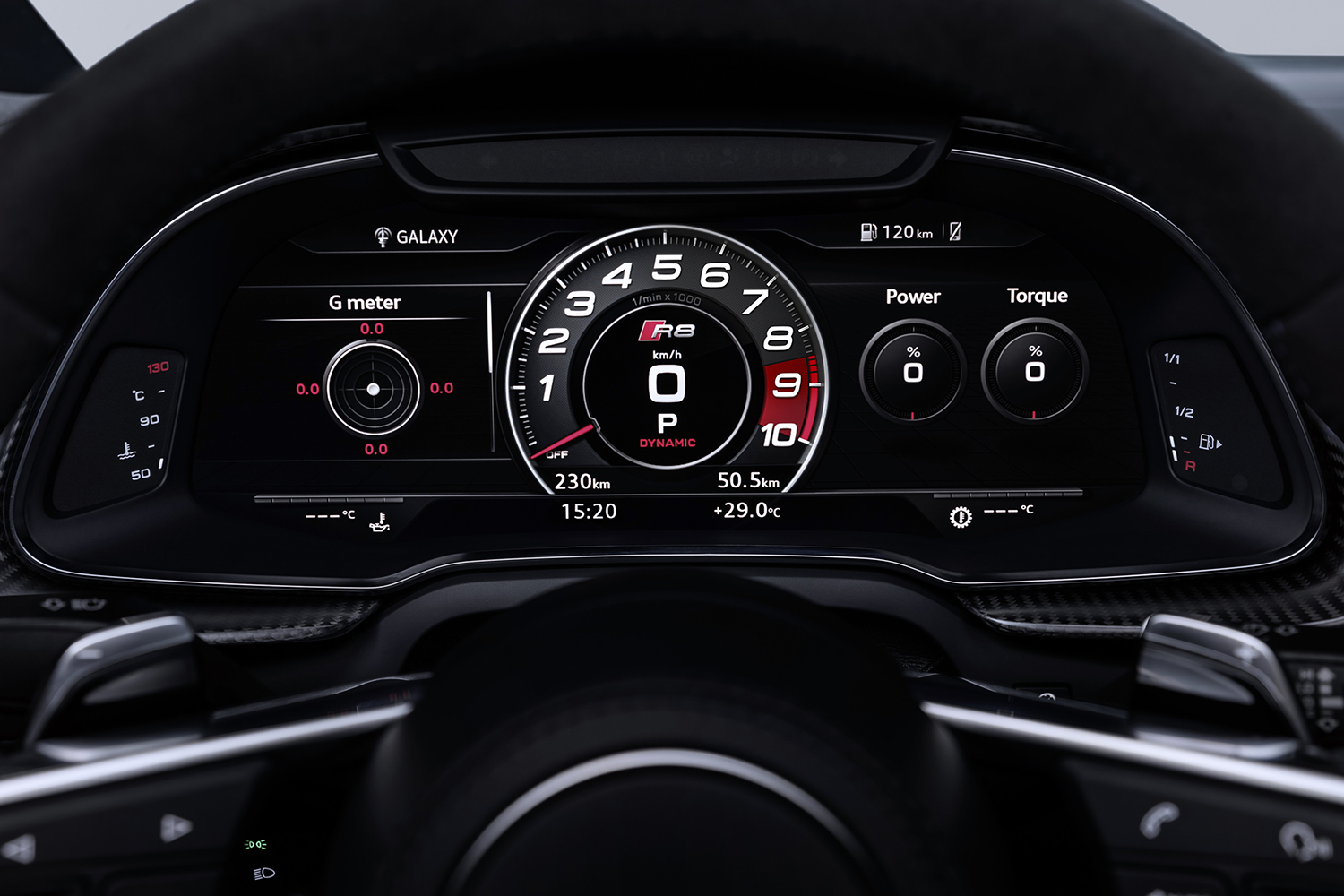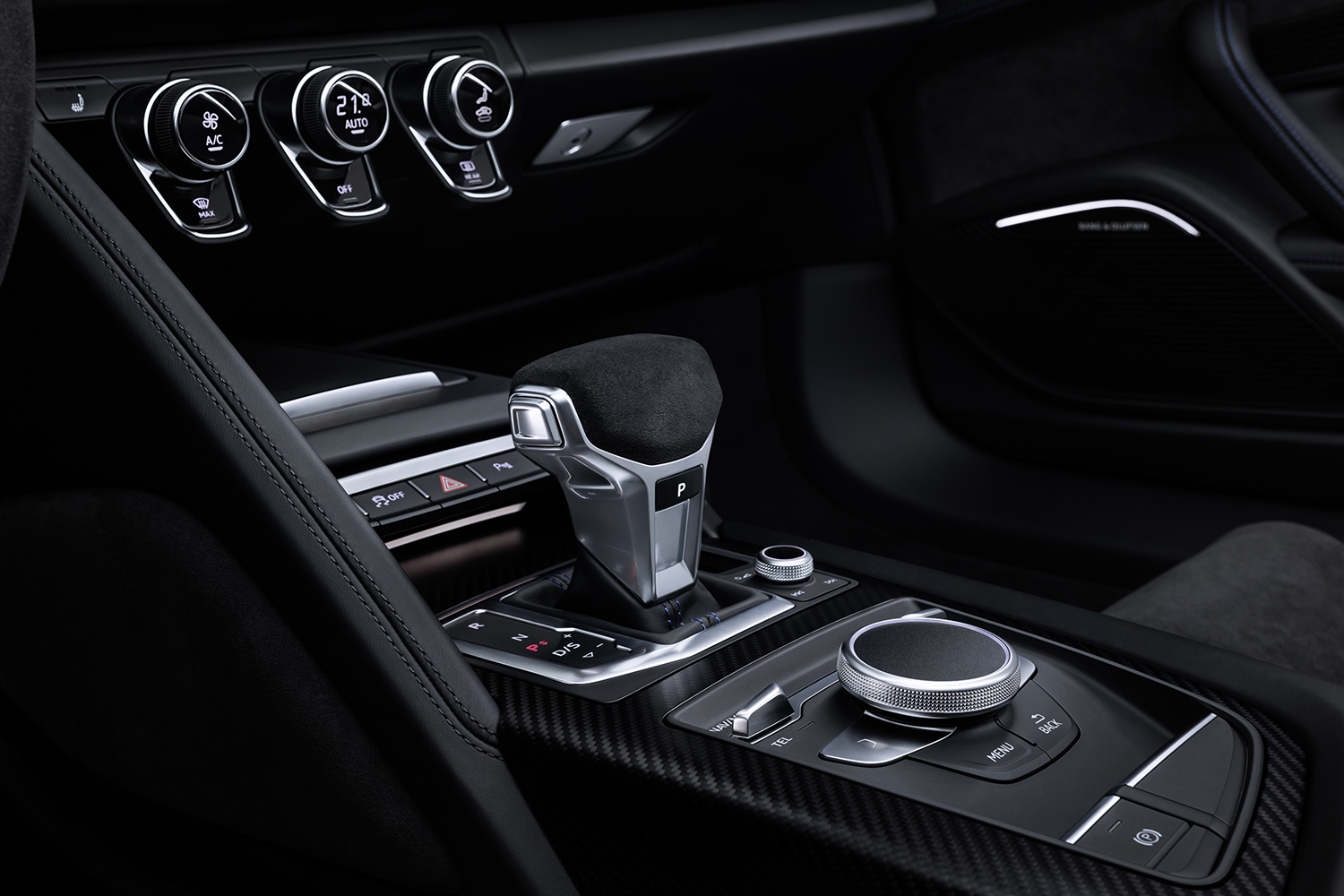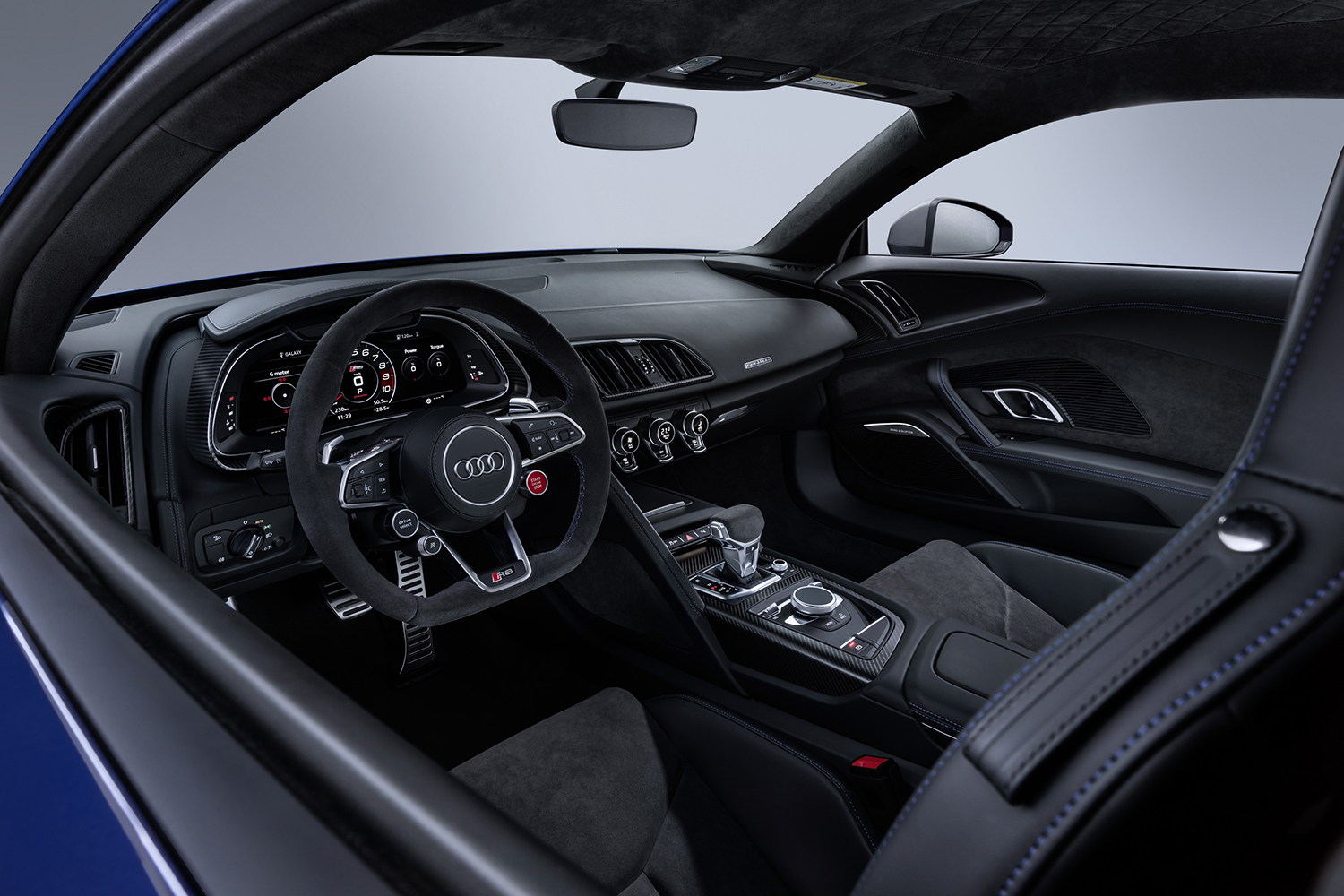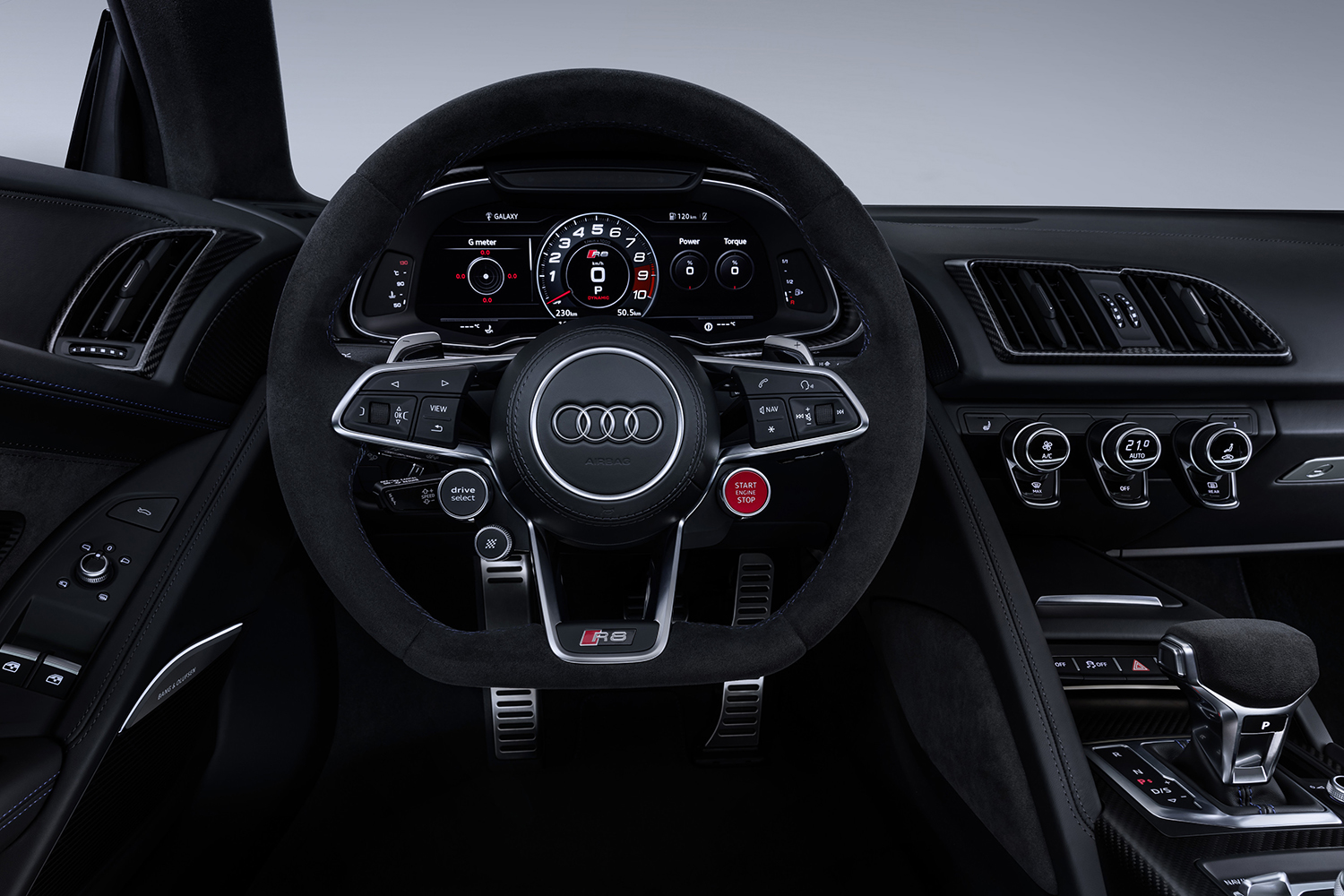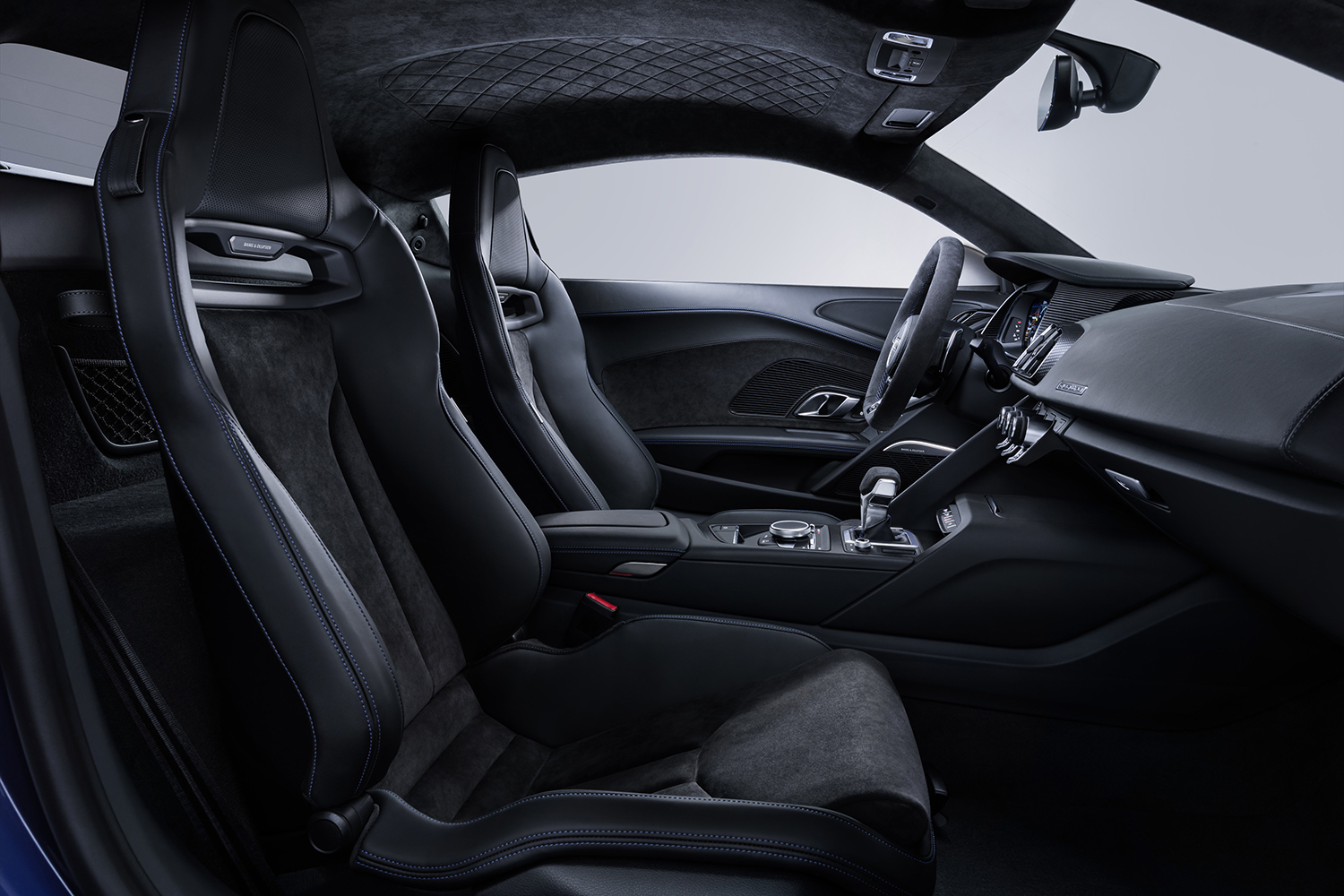Audi’s V-10-powered R8 has felt like the last of a breed since it’s introduction in 2015. Everything is going hybrid or electric and its naturally aspirated, rev-happy engine is an anachronism, a thing of old-school beauty and soul and fire sending an intoxicating melody through the air at 120 decibels. And though the next generation will likely see the engine’s demise, Audi isn’t ready to let the R8 go quietly into the night just yet with a just-released, fairly extensive update.
Still making use of that glorious 5.2-liter V-10, the new R8, depending on guise, will either deliver 562 horsepower for the standard R8 or 611 horsepower for the heavy-hitter version, all of which will be sent to each of the R8’s wheels. Audi also has managed to decrease the R8’s weight, even though the company had to add new emissions controls to the supercar’s exhaust.
The car’s dynamics have also been sharpened, with a retuned electric power steering unit, as well as suspension tweaks to ensure that drivers are greeted with what they expect from a machine that looks like this new R8. As such, the biggest change to the upcoming R8 is obviously the exterior, which according to Audi, shares a heck of a lot with the brand’s racecars.
As you can see, the R8 has become much sharper in its looks and exterior edges and that’s because Audi wanted to have the road-going R8 reflect more of its race car counterpart. According to the company, 50-percent of the road car’s parts are shared with the brand’s GT3 racer.
That figure jumps up another 10 percent when you compare the street-legal machine and its GT4 cousin. Oliver Hoffmann, technical managing director of Audi Sport GmbH, said, “No other motor car is so close to motor racing as the R8.”
Pricing and availability have yet to be disclosed, but given this is just a hair more than your average mid-cycle refresh, we wouldn’t be surprised if the R8’s $138,700 starting price stayed relatively intact. Audi says that the new R8 is, “Born on the track, built for the road,” but with its new looks, and the updated hardware behind it all, it almost seems the opposite is true. As if Audi birthed the R8 on the road, but it’s ready to decimate the track.
